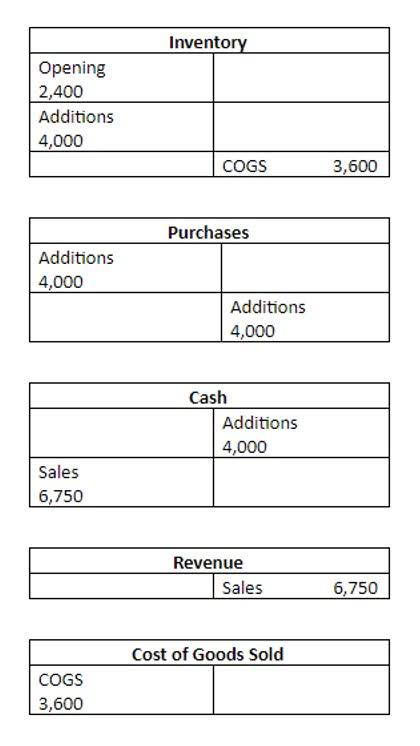
A system like this guarantees that money is spent wisely and aligned with company objectives. A performance budget promotes transparency by making financial decisions publicly available. It holds organizations responsible for their spending by linking funds to evident outcomes. This idea builds trust among stakeholders, including taxpayers, investors, and employees, to guarantee that financial management is transparent and efficient.
Quarterly Budget Performance Report
A performance budget is a strategy for allocating financial resources based on the efficiency and effectiveness with which an organization achieves specific goals. In contrast to traditional budgeting systems, which focus on line-item spending, performance budgets emphasize outcomes and results by linking financial resources to measurable performance indicators. Governments, performance budget businesses, and non-profit organizations frequently use this approach to distribute funds to their most valued activities. Allocating adequate resources and responsibilities for the action plans.
- A government that implements a performance budgeting system needs a robust process for generating, analyzing and reporting on performance information.
- Forecasting and budget adjustments should involve the input and feedback of the stakeholders and actors who are affected by or have an interest in the budget process.
- If your organization is due for a revamped budget, then here’s why you should consider implementing performance-based budgeting.
- Traditional or line-item budgeting allocates funding through costs of inputs (e.g., staff, equipment, supplies) regardless of the ability to meet performance goals.
- This budgeting technique has been linked to improved expenditure control, higher efficiency and greater performance.
- This type of budgeting requires Key Performance Indicators (KPI’s) linking resource allocation and performance measures.
- It exposes the low-performing employees or departments, necessitating suitable action to avert the same.
Internal Sources of Finance
Performance-based budgeting, by comparison, focuses on targets and offers the flexibility to allocate funds when conditions are met. It aims to improve the efficiency of a company’s expenditures, boost employees’ commitment and provide accountability. In conclusion, performance budgeting offers a strategic and results-oriented approach to financial management.
- Then they set clear objectives and develop a strategy to achieve the outcome.
- To implement a performance budgeting system, organizations must invest in large infrastructure investments for data collection, processing, and reporting.
- These metrics help you assess your efficiency, effectiveness, and profitability.
- Budget adjustments are the changes made to the original budget plan to reflect the actual or expected results of the forecasting process.
- Therefore, budget performance analysis should be conducted with care and caution, and with a clear understanding of its purpose, scope, and limitations.
How to assess the quality, efficiency, effectiveness, and impact of budget performance?
While these traditional budgetary methods are useful in helping the management in internal regulation, they are not as beneficial when it comes to policy and decision making. These types of budgets only assure the top management that money has been spent for the approved purpose but do not what the money has accomplished. The resources are categorized according to the programs and provide performance indicators. It finds solution-based accountability management responsible for the objectives they have to achieve. It doesn’t matter that you got 95% of the way there on your first go at it.
While these criticisms highlight the limitations of performance budgeting, it is important to address them through careful design and implementation. In this article, we will explore the definition of performance budgeting, its benefits and challenges, key components, and steps to implement it effectively. We will also examine examples of organizations successfully using performance budgeting and address some criticisms surrounding the approach. By the end of this article, you will have a comprehensive understanding of performance budgeting and its relevance in the world of finance. Therefore, organizations must identify relevant and measurable KPIs directly linked to their objectives when implementing performance-based budgeting. This might involve examining existing performance measurement systems and updating them to align with the organization’s goals and priorities.

Budget Performance Report in PDF

Monitoring and continuous improvement are crucial aspects of budget performance analysis. By tracking progress and adapting strategies, organizations can ensure that their budget performance aligns with their goals and objectives. From various perspectives, monitoring and continuous improvement offer valuable insights into the effectiveness of budgeting processes.
- Governments, businesses, and non-profit organizations frequently use this approach to distribute funds to their most valued activities.
- Evaluating the results of each department’s operations will help you set achievable objectives and build a budget strategy that can be monitored and tailored as needed.
- The most severe criticism is that line item budgeting presents little useful information to decision makers on the functions and activities of organizational units.
- Performance budgeting and traditional budgeting use different approaches to allocating resources.
- Most governments use performance data to account for their funds they have appropriated in their projects to the parliament and the general public, besides self-regulation.
- In this section, we will discuss how to assess your income generation against your targets from different perspectives, and provide some tips and examples on how to improve your revenue performance.
- Because of this, it can be difficult to get a real measurement on how well a team, a department, or an organization is actually performing.
Budget performance analysis: How to Measure and Improve Your Budget Performance

Implementing performance-based budgeting in public is not that easy, online bookkeeping but given the dynamic nature of the business and political environment, it is very significant. The traditional budgeting methods are basically tools for regulating and controlling expenditure. They spell out the amount of money to be spent for a particular purpose. As the financial year progresses, line-item budgets dictate that spending must be within the budgeted amount unless formal budgetary amendments are permitted.
- This form of budgeting enhances awareness of the kind of services expected by the taxpayer.
- By linking funding decisions to measurable performance targets, performance budgeting seeks to improve accountability, transparency, and effectiveness in government spending.
- Performance-based budgets also give the common citizens power to hold the elected officials accountable for not attaining the performance target as per the budget and within the money already spent.
- Forecasting and budget adjustments depend on the quality and availability of the data and information used to estimate the future conditions and results.
- It doesn’t matter that you got 95% of the way there on your first go at it.

Performance budgets, as the theory goes, are designed to motivate workers, https://www.bookstime.com/articles/what-are-t-accounts increasing their commitment to the project and making it more likely that they will produce the desired results.
What is a budget performance report?
In most cases, these agreements are coupled with an incentive system that financially rewards employees when their ministry achieves the targets in their performance agreements. Several countries and jurisdictions have successfully implemented performance-based budgeting in the public sector. For example, Australia’s Outcome Budget Framework ties agency budgets to specific outcomes. In addition, the United States Government Performance and Results Act (GPRA) requires federal agencies to develop strategic plans and report on their performance.
